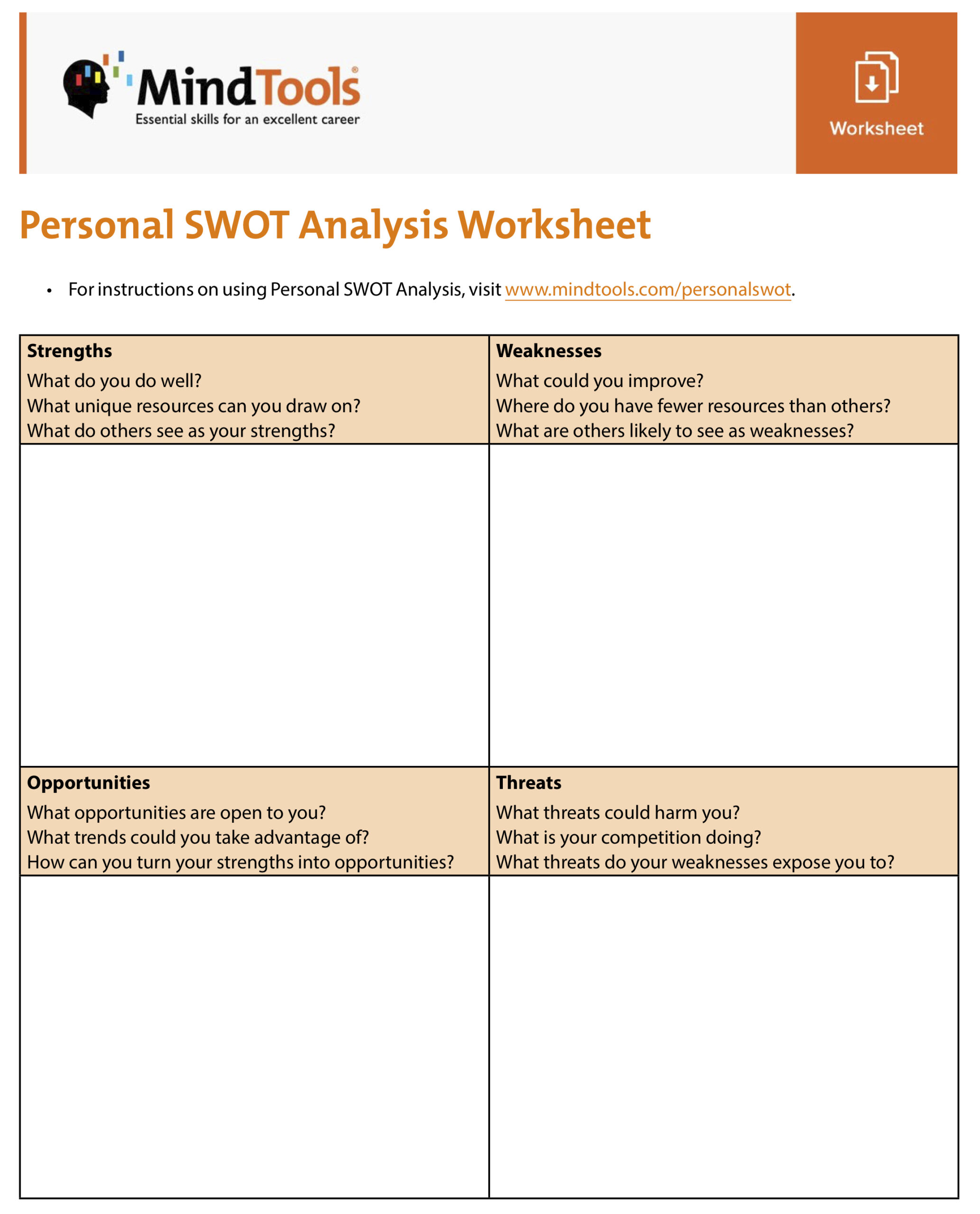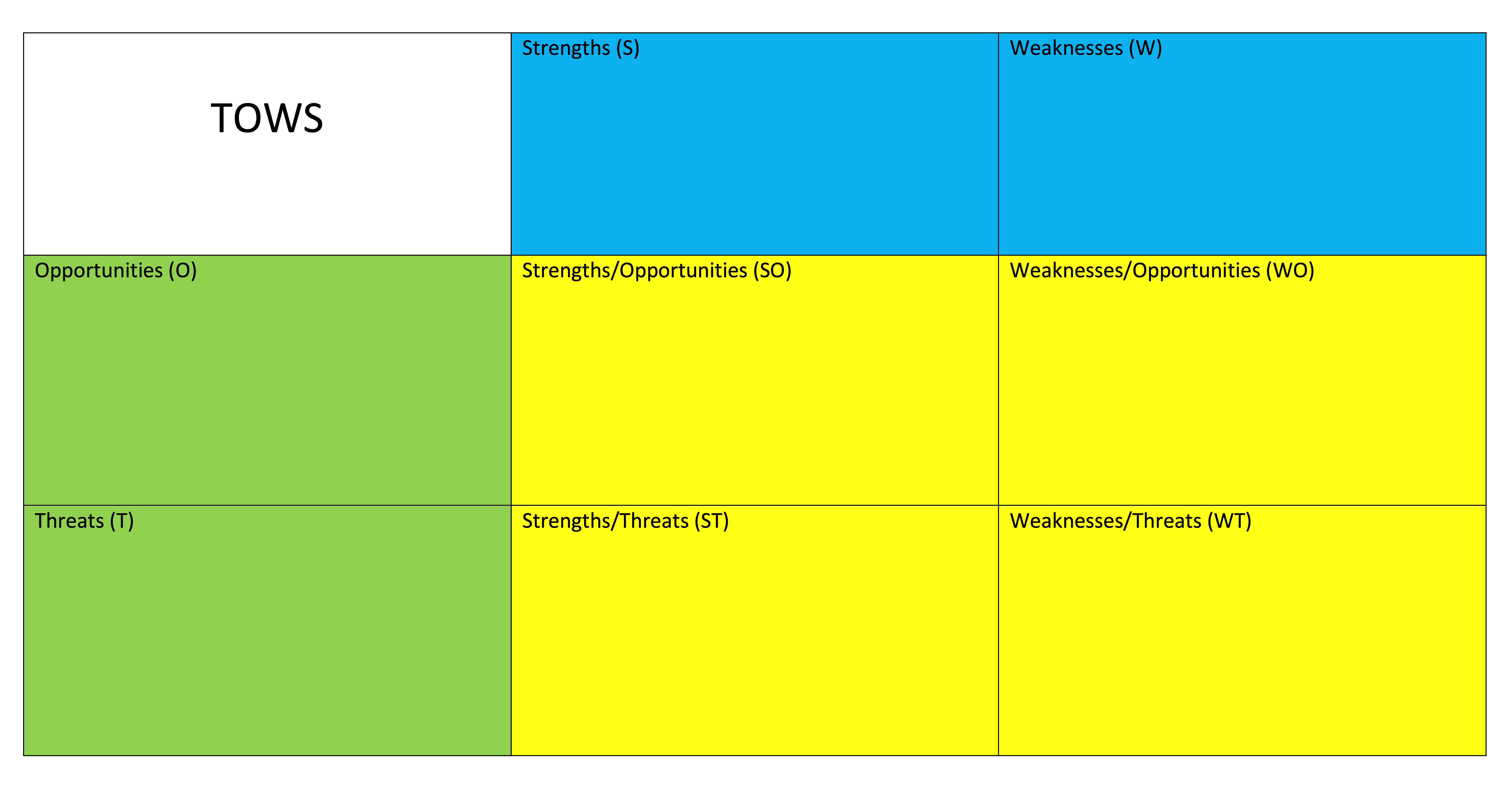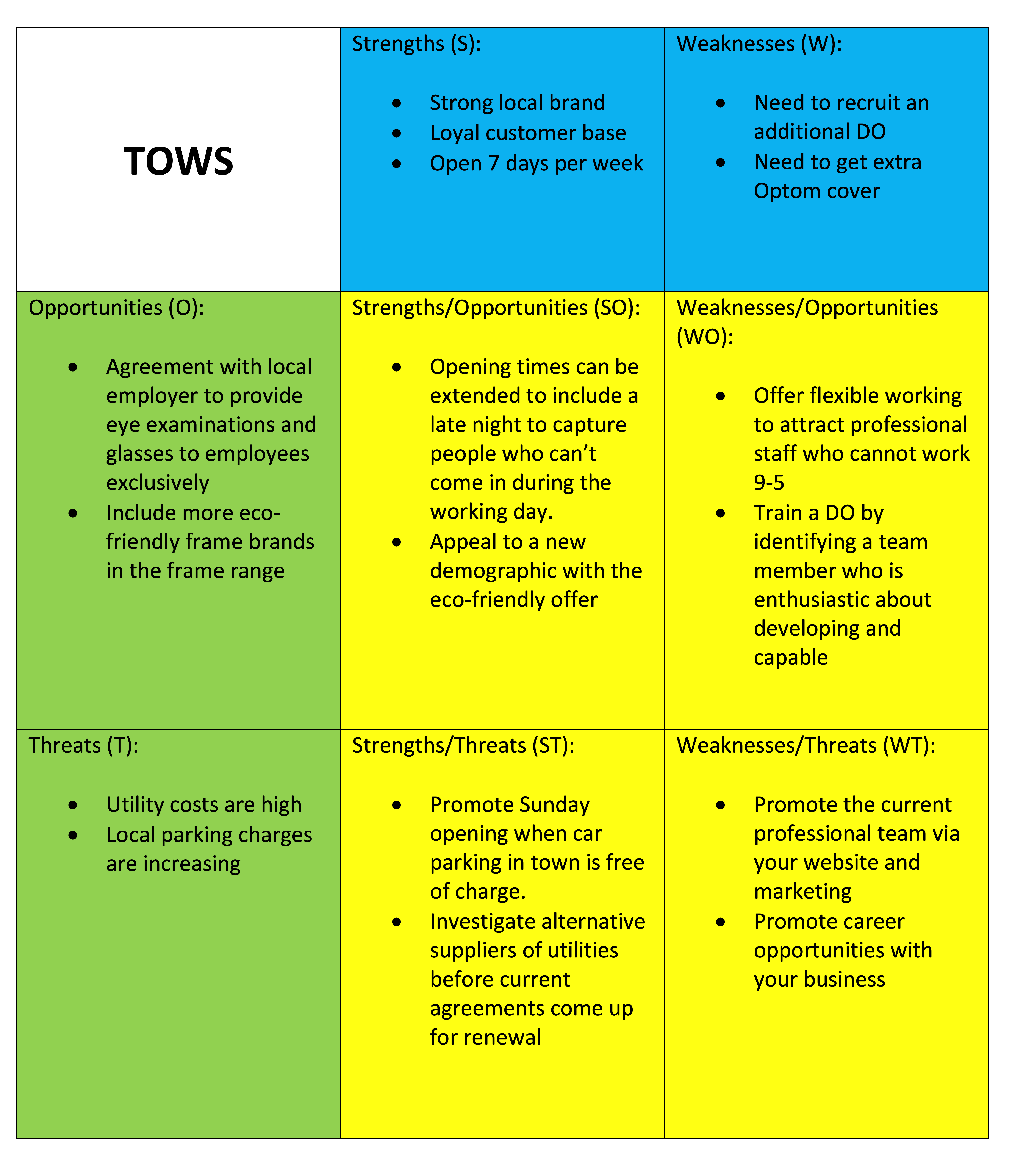Business Bites: TOWS or SWOT?
To TOWS or SWOT – or both? That is the question…
What is a SWOT analysis?
A SWOT analysis is a technique used to help a person or business identify Strengths, Weaknesses, Opportunities, and Threats related to business competition. It will help to identify the internal and external factors that are favourable and unfavourable to achieving those objectives. It will also help to anticipate the key challenges you may encounter, and help to inform decision making around these.
Users of a SWOT analysis often ask and answer questions to generate meaningful information for each category to make the tool useful and identify their competitive advantage.
You can access the SWOT analysis worksheet from MindTools here – and read more about SWOT on the ABDO Business Support Hub here.

Personal SWOT analysis worksheet (MindTools)
What is TOWS?
A TOWS matrix can be seen as an extension of the SWOT process. Where the SWOT can help to identify areas for focus, the TOWS starts to form actions you will take.
Below is a TOWS template:

TOWS template
The areas shown in green are External Factors to your business/project, while the areas shown in blue are Internal Factors to your business/project.
In a TOWS analysis, we are concerned with the areas in yellow (the relationship between the internal and external factors). By focusing on the internal and external, the positive and the negative, TOWS offers a simple way to form actions that will improve your current position and show the way forward in key areas. You are aiming to exploit your positives and minimise your negatives.
In terms of the yellow boxes, they are essentially:
- SO: How can you utilise your strengths and turn them into opportunities?
- ST: How can you utilise your strengths to overcome threats, and where possible turn threats into opportunities.
- WO: How can your opportunities help to remove weaknesses?
- WT: Your ‘watch out/defensive’ area showing how your weaknesses can exacerbate your threats.
Below is a simple TOWS example for an optical practice:

TOWS example for an optical practice
Listing your strategies
Once you have a completed SWOT and TOWS analysis, you will have a list of strategies for your business. Next, you will need to prioritise these strategies. If a particular strategy is large, you may wish to break it down into phases and treat each of these as a mini strategy.
Using a SMART analysis when setting your goals will help you to avoid ‘woolly goals’. You need specific targets to work to, and to measure yourself against. Make sure that everyone in the business is aware of the business goals, and any part that they may have to play in them. The strategy needs to be able to give you and your team improved focus.
Additional tools that may be helpful when completing the initial SWOT analysis include Porter’s Five Forces, PESTEL and VRIO.
Porter’s Five Forces looks at:
1. Threat of new entrants
2. Supplier bargaining power
3. Customer bargaining power
4. Threat of substitute products/service
5. Competitive rivalry
PESTEL looks at:
• Political factors: Leadership competition; elections
• Economic factors: interest rates; economic growth; recession; Investment availability; borrowing
• Social factors: Health threats; social unrest; social Mobility; healthcare
• Technology factors: Innovation; automation
• Environmental factors: pollution, waste disposal
• Legal factors: health and safety; new legislation; competition law
VRIO looks at:
• Valuable – are your goods/services deemed valuable by your customers and competitors?
• Rare – do you offer homogeneous goods/services or are they unique?
• Inimitable – could your competitors copy what you offer/do?
• Organised – are you as a business in a place to maximise the value of the above?
Both PESTEL and Five Forces consider external factors whereas VRIO considers internal factors.